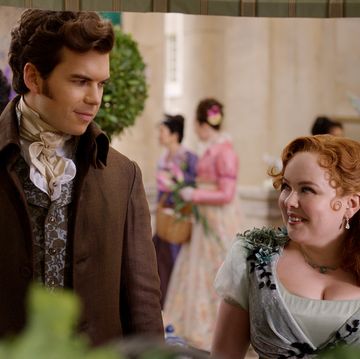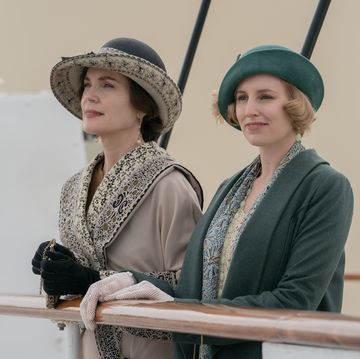Cecily Brown is exceptionally aware of the power of images. One of the first things the British-born artist says when I arrive at her studio is that she'd prefer to have this article illustrated exclusively with pictures of her work (sorry!). "Magazines always say they're going to show the paintings," she says with a sigh, "and then there's a picture of me."
This tendency may be the outgrowth of a notorious magazine profile from back in 2000, which featured a spread of the petite brunette sprawled across her studio floor, midriff peeking out. The story announced the painter as one of New York's next great art stars, and it wasn't wrong. Just a few years out of art school, Brown had already been picked up by megadealer Larry Gagosian and become one of the top-selling female artists in the world, with auction prices reaching seven figures for collectors including Michael Ovitz and Elton John.
But in the past year Brown, now 47, has turned a corner. She left Gagosian Gallery—she'll have her next show with Paula Cooper, a dealer better known for representing conceptual artists—and she's the subject of her first solo museum exhibit in New York, at the Drawing Center. The retrospective, titled "Rehearsal," is more revealing of who Brown is and how she works than any of her past exhibitions. "It's scary, because my drawings have always been so private," she says, sitting for a coffee and a cigarette. She had never thought to publicly show the works in "Rehearsal" until a curator friend suggested it. "I realized it was this huge body of work," Brown says. "I had hundreds of drawings from the past 20 years."
More than 80 of those works—in ink, pastel, watercolor, gouache, and pencil, most of them never seen before—offer a glimpse into the imagery that has inspired Brown for the past two decades. Looking at the drawings, one begins to see how the crowds of bodies, twisted and tangled like roots, in her signature gestural paintings come from a practice of copying masterworks by Degas, Hogarth, and Brueghel, as well as the cover of Jimi Hendrix's Electric Ladyland album.
The drawings are more than mere studies for the paintings, however; they're "a process of discovering something; from copying you really internalize the image," Brown says. They are also "more investigative. I guess it's like the drawings are journalism and the paintings are fiction."
Though her paintings are largely abstract, the drawings reveal Brown's close attention to her source material. "I was blown away by the drawings themselves, but also by the different view they give into her art," says Claire Gilman, a curator at the Drawing Center. "You can see real sincerity and how deeply felt this process is for her. She is really grappling with every image."
For Brown the show is about letting down her guard. "What I'm afraid of is becoming self-conscious about the drawings, because they've been this hidden thing," she says. "I feel like they're mine, and I'm protective of them." Rightfully so, perhaps, but this is a side of Brown that finally seems ready for exposure.
This article originally appeared in the November 2016 issue of Town & Country.


![Photo courtesy of the Lear Family Archives. Artwork © Ed Ruscha.[97] a group of people sitting on a couch](https://hips.hearstapps.com/hmg-prod/images/photo-courtesy-of-the-lear-family-archives-artwork-c-ed-ruscha-97-jpg-6643730f144fd.png?crop=0.744xw:1.00xh;0.129xw,0&resize=360:*)










